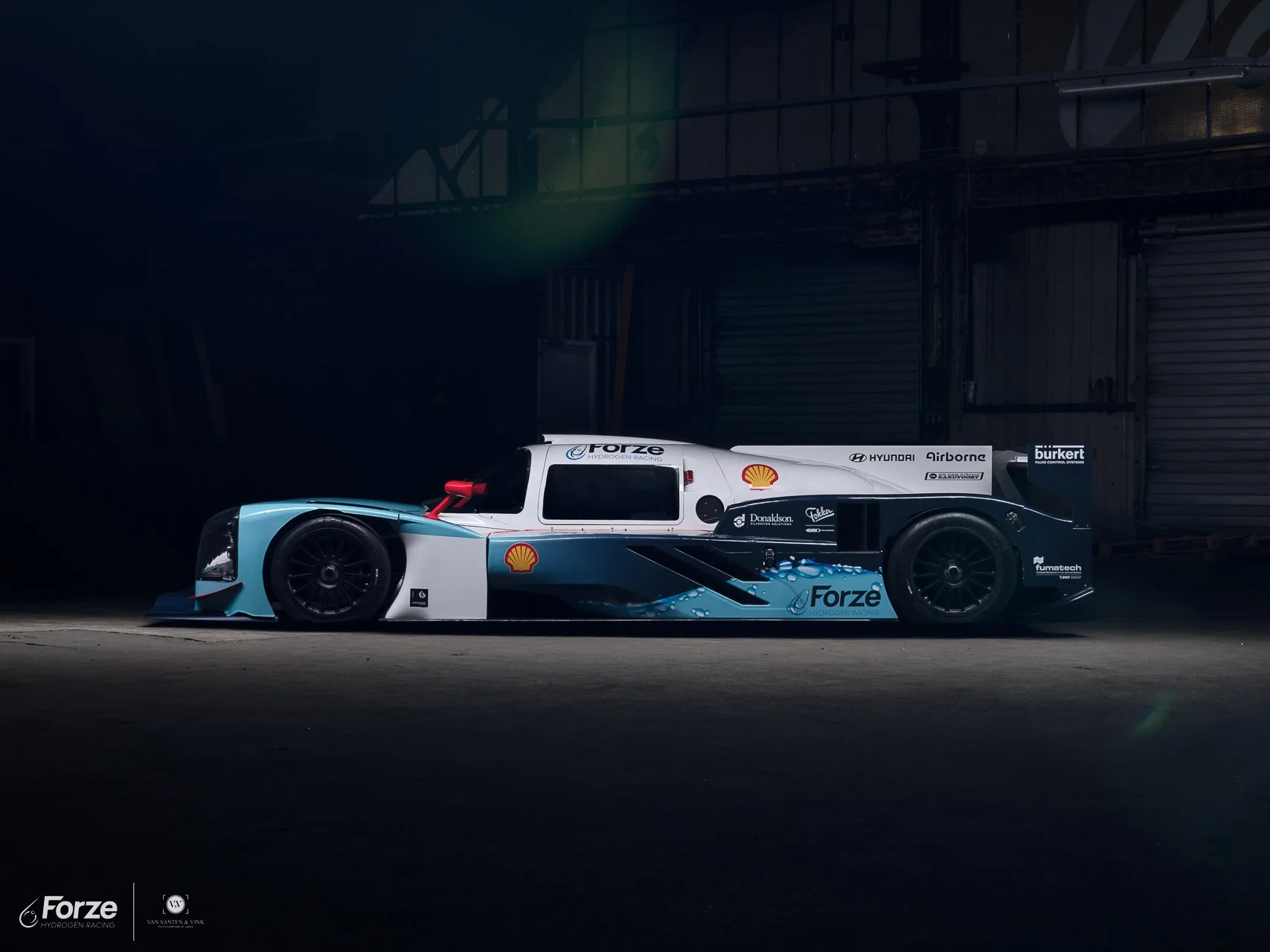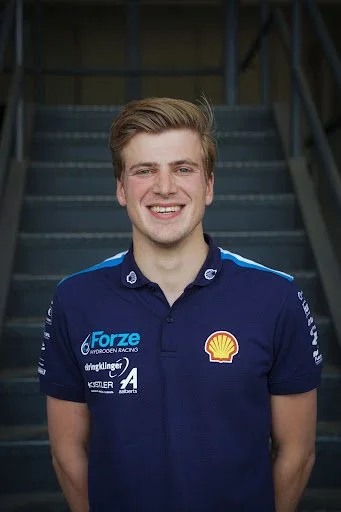Tech Talk: the Monocoque
In the early design phases of a race car, the chassis is one of the most prominent factors in the overall shape and character of the car. It is the core of the car and functions as a mounting place for most of the components in the vehicle. The chassis of the Forze IX consists of roughly three big building blocks. Today, we will talk about one of them, the Monocoque.
The monocoque of the Forze IX
What is a monocoque?
In short, the monocoque is the carbon fibre part of our chassis. It is a safety shell that embodies our driver and a lot of components. The shell is a composite part where the fibres and aluminium honeycomb give it a high stiffness and strength while being light at the same time. Our monocoque is based on a Le Mans Prototype 2 (LMP2) chassis and is designed and manufactured together with our partner ADESS.
Why is the monocoque so important?
The most important purpose of the monocoque is to protect our driver in the event of a crash. A race car is exposed to immensely harsh conditions and a lot of dynamic loads are put on the vehicle. Our monocoque needs to be strong enough to withstand loads equivalent to a 45G crash, as specified in regulations from the motorsport governing body, the FIA. To make sure our car is safe enough we have to take part in the FIA ‘homologation’ procedure. Homologation entails that a component -eventually the whole car- complies with the safety regulations imposed by the FIA. Besides the safety aspect, the monocoque can be seen as the mechanical spine of the car. Almost all the components are mounted to the monocoque. It is quite a challenge to design the monocoque in such a way that every component fits. But in the end, we have to make sure that every bodywork and suspension component can be attached to the monocoque securely. To give an idea of the scale: we have over 350 different holes in the monocoque. Every hole has to be put in with great care and needs proper review to prevent any clashes between components, while keeping everything solidly attached to the car.
What makes our monocoque so special?
A standard LMP2 monocoque is made up of 2 large parts: a crashbox and a cockpit part. But since our car is quite different from a standard LMP2 car, we had to design a custom monocoque. Our monocoque consists of 3 parts, the crash box, extension box and cockpit part. The crash box is the crumble zone of the car. During a crash, this part is designed to be destroyed by the impact. In this way, it absorbs a lot of the energy from the crash, so the driver is spared these immense loads. The cockpit part is the part where our driver sits in. This, of course, needs to stay intact during a crash. In between the crashbox and cockpit, we have added the extension box. As the Forze IX will have front wheel drive, we had to create space right in front of the driver. So, the monocoque was made slightly longer with the extension box to make room for all the front drivetrain components. The fact that this happens is unique, and entails that the extension box had to be a completely custom part. It is designed to create the right amount of space for our drivetrain while functioning as a mounting place for the front suspension and keeping structural integrity in mind. In order to improve accessibility during maintenance, the extension box can be detached from the crashbox and cockpit part. In this way, the front drivetrain can be reached easier. As a consequence of the longer monocoque, the steering system was also adjusted. The steering column is now longer and placed differently and our steering rack is changed to fit between the front motors. Also, the rear of our monocoque has been customized. To be able to fit our hydrogen tanks a large cutout was made on the rear face of the cockpit part. The packaging can now be tighter, as a tank now snugly sits in this cutout, creating extra space for other components.
It takes a special type of monocoque to fulfill all functions we require as a prototype car racing team. The driver must be kept safe even in heavy crashes, the structure should be a backbone, giving stiffness to the car and last but not least: it holds the whole structure together as a lot of important components are mounted directly to the monocoque. Therefore, this segment of the chassis is a crucial piece of the puzzle in building the world’s fastest hydrogen racing car!
Do you want to know more about our progress on the Forze IX? Stay tuned for more!
Written by
Flint ten Berg



